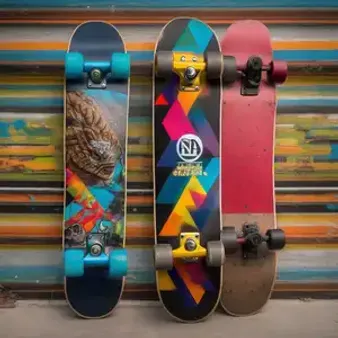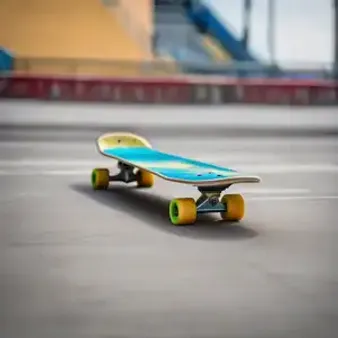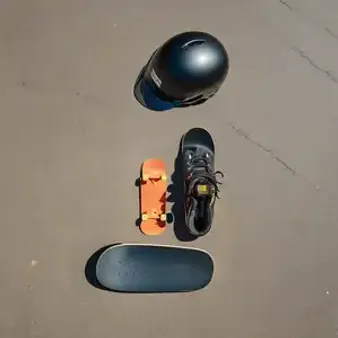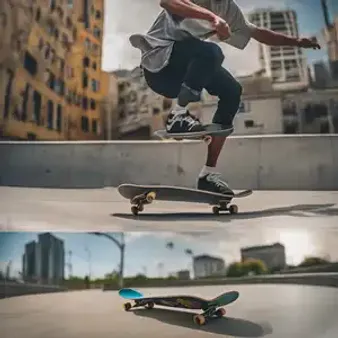Table of Contents
Skateboarding is an exciting and popular activity enjoyed by people of all ages. At kizworld, we want to help you learn everything about skateboards, from choosing the perfect board to mastering cool tricks. Whether you're a complete beginner or just looking to improve your skills, this guide has something for you!
Topic | Key Points |
|---|---|
Choosing a Skateboard | Consider your riding style, board size, and components like trucks and wheels. |
Mastering Basics | Learn how to balance, push, turn, and stop safely. |
Safety Gear | Always wear a helmet, knee pads, and elbow pads to protect yourself. |
Skateboard Styles | Explore different styles like street, vert, and cruising to find what you enjoy most. |
Choosing the Right Skateboard
Finding Your Perfect Match
Picking your first skateboard can feel like a big deal! It's like choosing a best friend who'll be with you on all your adventures. First, think about what you want to do with your skateboard. Are you dreaming of landing awesome tricks at the skatepark, like those in "and park skateboarding?" Or do you see yourself cruising around town, feeling the wind in your hair? Maybe you're more into "surf skateboarding" and carving up the streets like waves? Knowing your riding style will help you pick the right board.
Just like shoes, skateboards come in different sizes. If you're just starting out, a deck around 7.75 to 8 inches wide is a good choice. It gives you a good balance of stability and control as you learn the basics. Don't worry too much about the fancy designs at first; focus on finding a board that feels comfortable under your feet. Remember, you can always customize your board later with cool grip tape and stickers to show off your style!
Understanding the Parts
Now, let's talk about the parts of a skateboard. The board itself is called the deck. It's usually made of wood and has a slightly curved shape. Underneath the deck, you'll find metal trucks. These are what let you steer and turn. Think of them as the steering wheel of your skateboard! Attached to the trucks are four wheels. Softer wheels are great for cruising and absorbing bumps, while harder wheels are better for speed and tricks. For beginners, softer wheels are usually a good starting point.
Component | Description |
|---|---|
Deck | The wooden board you stand on. |
Trucks | Metal parts that connect the wheels to the deck and allow for turning. |
Wheels | Come in varying hardness, affecting speed and smoothness. |
Bearings | Small metal rings inside the wheels that allow them to spin smoothly. |
Inside the wheels, you'll find tiny ball bearings. These help your wheels spin smoothly and quickly. It's like having super-powered roller skates for your skateboard! Each part of the skateboard plays an important role in how it performs. When you understand the different parts, you can start to see how they all work together to create an awesome ride.
Choosing the Right Skateboard
Mastering the Basics of Skateboarding
Learning to skateboard is like learning to ride a bike – it takes practice and a little bit of courage! You'll want to start on a flat surface, maybe your driveway or a quiet park. Getting comfortable with just standing on the board is your first step. It might feel wobbly at first, but you'll find your balance. Next, learn to push off with one foot, kind of like scooting with a scooter. Once you're rolling, try steering by gently leaning in the direction you want to go. Remember those trucks we talked about? They're your steering wheel! Stopping can be a little tricky at first. You can either drag your foot on the ground or, as you get more confident, learn to use the tail of your board to slow down.
Mastering the Basics of Skateboarding
Essential Skateboard Gear and Safety Tips
Before you hit the streets or the skatepark, let's talk about safety gear! It's like wearing a superhero suit – it protects you when you're learning new tricks and helps you stay in the game. Always wear a helmet; it's your best friend when you're skateboarding! Think of it as a shield for your brain, protecting you from bumps and falls. Knee pads and elbow pads are also super important. They're like armor for your joints, helping you bounce back from those inevitable wipeouts. Remember, even the pros wear safety gear, so don't be afraid to rock yours! Learn about the best skateboarding helmets and pads.
Essential Skateboard Gear and Safety Tips
Exploring Skateboard Styles and Tricks
Finding Your Skateboard Groove
Just like there are different types of music, there are different styles of skateboarding! Each one has its own vibe and tricks. Street skateboarding is all about conquering urban obstacles – stairs, rails, ledges – imagine turning the city into your own personal skatepark! Vert skating is for those who love heights and airtime; think halfpipes and ramps like you see in competitions. If you're more into a laid-back style, cruising is for you. You can ride smooth surfaces, enjoy the scenery, and even try some dance-like moves on your board. It's like a mix of skateboarding and surfing on land! You can even try surf skateboarding to carve up the streets like waves!
No matter what style you choose, remember to start with the basics. Once you're comfortable with pushing, turning, and stopping, you can start exploring some easy tricks. Ever tried popping a wheelie on your bike? The manual on a skateboard is kind of like that. You balance on your back wheels, keeping the front wheels off the ground. It's a great way to improve your balance and board control. Want to learn how to do a 180? Check out our guide on how to do a 180 on a skateboard.
Leveling Up Your Skate Game
As you get better, you can try more challenging tricks like the ollie. This is the foundation of many skate tricks – you use your feet to pop the board into the air. It might take a while to get the hang of it, but once you do, it's like magic! From there, you can learn kickflips, heelflips, and even grinds and slides. Grinding is like sliding along a metal edge, and sliding is similar but on a smoother surface. These tricks take time and practice, but the feeling of landing them is amazing!
Remember, skateboarding is all about having fun and expressing yourself. Don't be afraid to experiment, try new things, and find your own unique style. There are tons of resources out there to help you learn, from online tutorials to skate camps. You can even check out skateboarding in a skatepark. And most importantly, be patient with yourself, don't give up, and enjoy the journey!
Exploring Skateboard Styles and Tricks
Final Thought
Skateboarding is a journey of constant learning and improvement. Remember to have fun, be patient, and never stop exploring the world of skateboarding. Stay safe, keep practicing, and enjoy the ride!